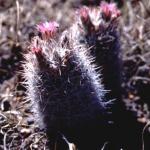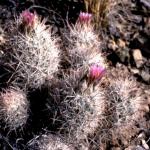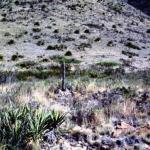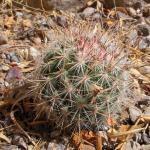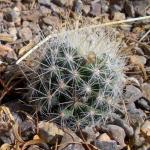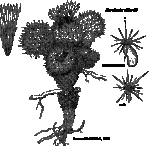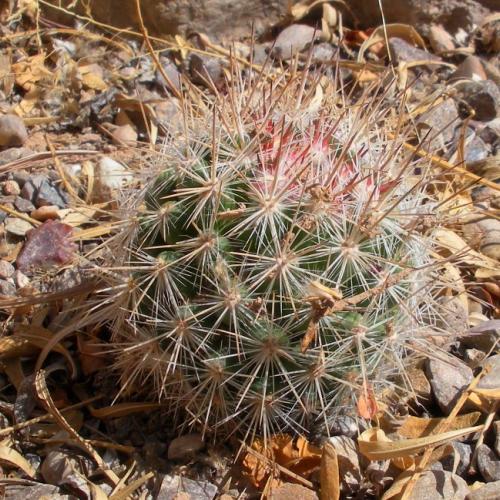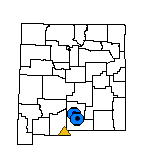Escobaria villardii (Villard's Pincushion Cactus)
| USFWS | State of NM | USFS | BLM | Navajo Nation | State Rank | Global Rank | R-E-D Code | NMRPTC Status | Strategy Status |
|---|---|---|---|---|---|---|---|---|---|
| E | SEN | SEN | S2 | G2Q | 2-1-3 | R | SS |
| Overall Conservation Status | Documented Threats | Actions Needed |
|---|---|---|
| UNDER CONSERVED | No Information |
genetic/taxonomic studies |
Although the population of E. villardii is distinct as a whole, it may be difficult to assign some plants in the population to a specific taxon without the aid of geographic information. For example, the Doña Ana County record of E. villardii occurs within the range of E. sneedii var. sneedii and needs corroboration by a vouchered specimen identified by an expert in the family, with notes on the variation in the population from which the specimen was taken. Populations of E. sneedii var. sneedii in Doña Ana County are variable in spine length and coloration, perhaps because they are intergrading to E. organensis. Most, if not all populations of E. sneedii var. sneedii and var. leei contain a few individuals that lack small, clustered sterile stems (a characteristic of E. villardii). If such an individual with unusually long reddish spines were taken from a population of E. sneedii var. sneedii, it could be identified as E. villardii.
*New Mexico Native Plants Protection Advisory Committee. 1984. A handbook of rare and endemic plants of New Mexico. University of New Mexico Press, Albuquerque.
*Castetter, E.F., P. Pierce and K.H. Schwerin. 1975. Reassessment of the genus Escobaria. Cactus and Succulent Journal (US) 47(2):60-70.
Sivinksi, R. 1995. Status report for Villard's pincushion cactus (Escobaria villardii). Submitted to U.S. Fish and Wildlife Service, New Mexico Ecological Services Field Office, Albuquerque.
Flora of North America Editorial Committee. 2003. Flora of North America, volume 4. Oxford University Press, New York.
For distribution maps and more information, visit Natural Heritage New Mexico

